These 15 rare fruits sneak around the globe like shy critters, hiding in far-off corners where most folks never wander.
So elusive, they’re like that secret handshake only fruit fanatics know, leaving your taste buds wonderin’ if they’ll ever get the chance to dance with these wild flavors.
If you reckon your fruit bowl’s missing a little mystery, these elusive beauties are the VIP guests you might never spot — but sure would be mighty sweet to meet someday!
1. Miracle Fruit (Synsepalum dulcificum)
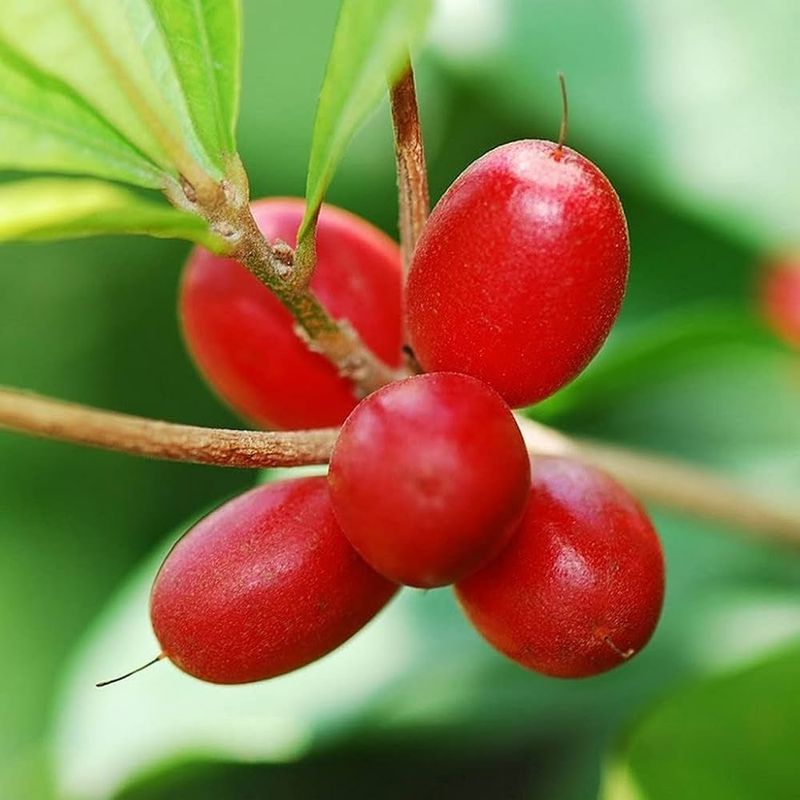
Imagine a tiny red berry that transforms sour foods into sweet delicacies! Native to West Africa, miracle fruit contains miraculin, a protein that temporarily rewires your taste buds for up to an hour.
Though not particularly tasty on its own, this magical berry makes lemons taste like candy and vinegar like apple juice. Strict regulations and its extremely short shelf life make it nearly impossible to find outside its homeland.
2. Jabuticaba (Plinia cauliflora)
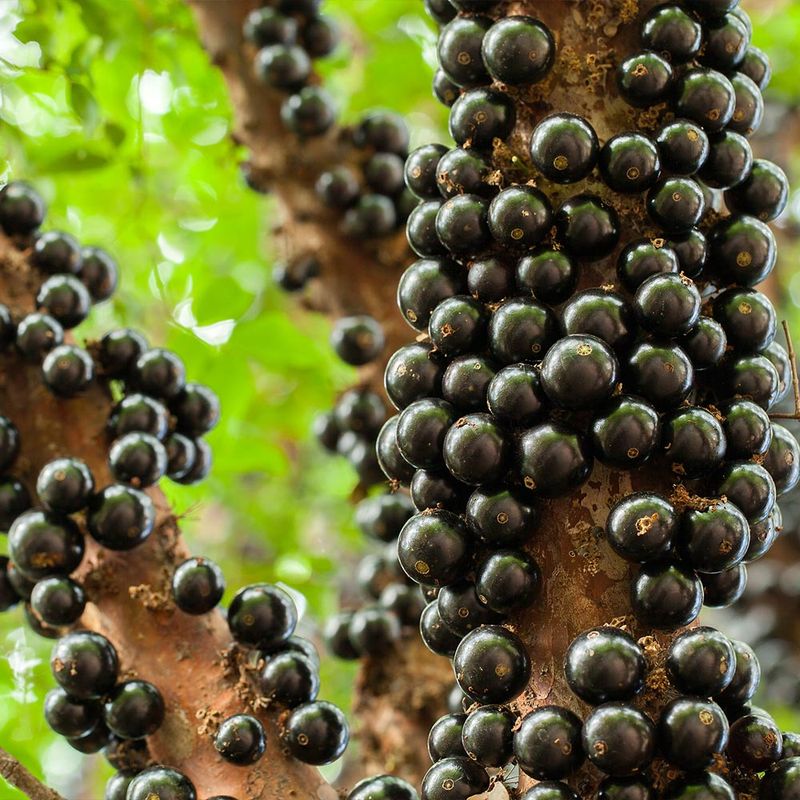
What if grapes grew directly on tree trunks? That’s essentially what Jabuticaba does! This Brazilian oddity sprouts purple-black fruits directly from its bark in a biological phenomenon called cauliflory.
Bursting with sweet-tart flavor reminiscent of muscadine grapes, these strange fruits ferment within 3-4 days of harvesting. Hence their extreme rarity outside South America – they simply don’t survive shipping without becoming alcoholic!
3. Black Sapote (Diospyros nigra)
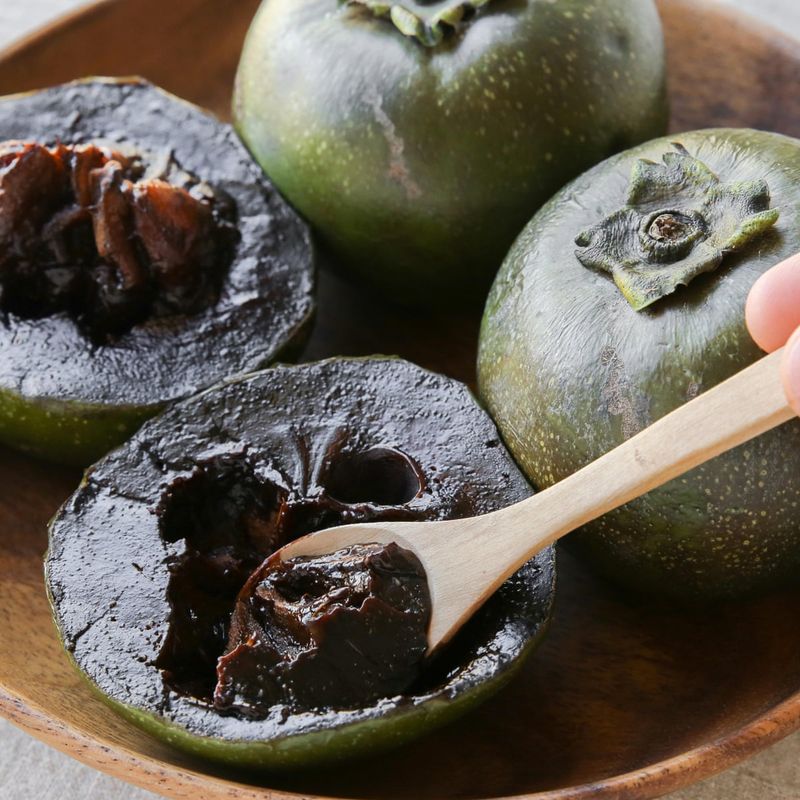
Ever wondered what chocolate pudding would taste like if it grew on trees? Black sapote, nicknamed the “chocolate pudding fruit,” answers that question! When perfectly ripe, its pulp transforms into a creamy, dark brown dessert-like consistency.
Found primarily in Mexico and Central America, this persimmon relative refuses to ripen properly when shipped. Don’t be fooled by its appearance – the fruit isn’t rotten, it’s supposed to look like that!
4. Mangosteen (Garcinia mangostana)
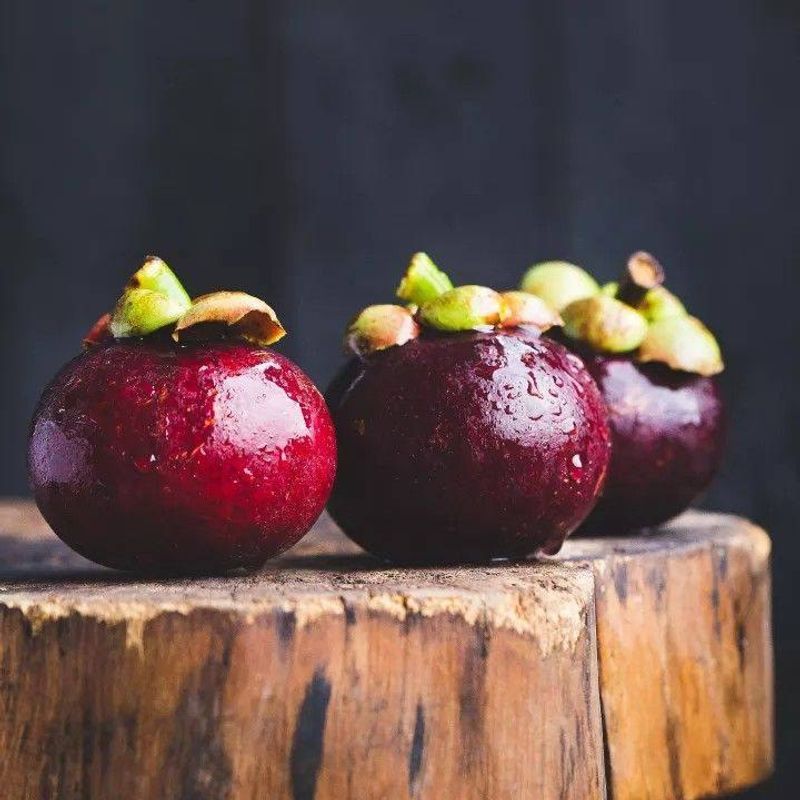
Crowned the “Queen of Fruits” in Southeast Asia, mangosteen’s purple rind hides snow-white segments of ambrosial perfection. Its flavor? A symphony of peach, vanilla, and strawberry that dissolves on your tongue like culinary poetry.
Though the US ban on fresh mangosteen imports was lifted in 2007, finding them remains nearly impossible. Their delicate nature and short shelf-life means most arrive past their prime, if at all. Have you ever tasted royalty?
5. Cupuaçu (Theobroma grandiflorum)
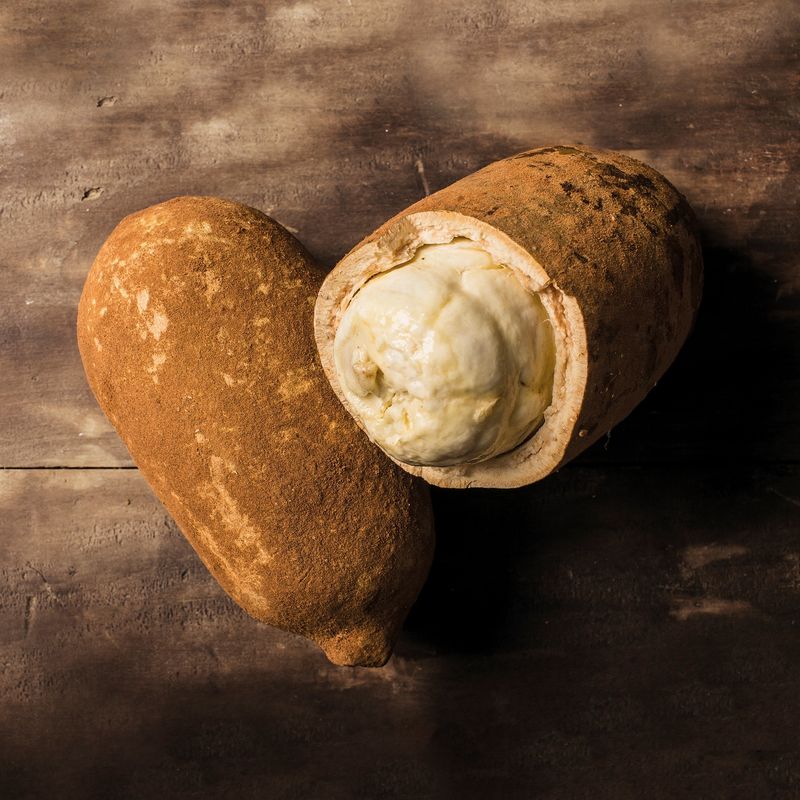
Chocolate’s forgotten cousin lurks in the Amazon rainforest! Cupuaçu, from the same plant family as cocoa, produces massive football-shaped fruits with intensely aromatic white pulp that tastes like chocolate-pineapple with hints of banana.
Brazilian locals treasure this superfruit for its creamy texture and energy-boosting properties. However, cupuaçu’s extreme perishability and the remote locations where it grows mean you’ll likely need an Amazon expedition to experience it!
6. Cherimoya (Annona cherimola)
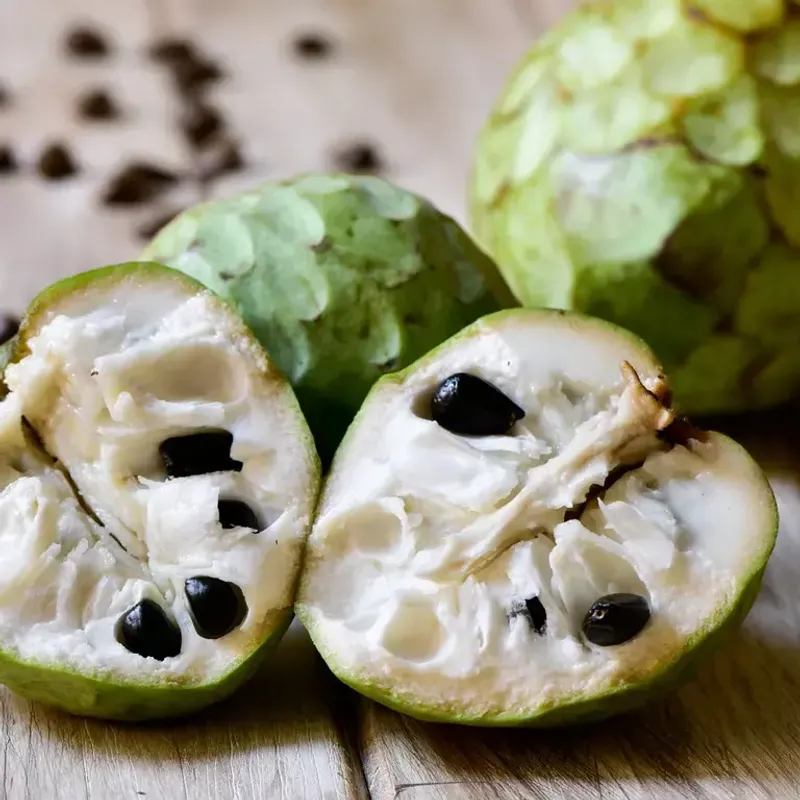
Mark Twain called it “the most delicious fruit known to man.” Cherimoya’s creamy white flesh tastes like a blend of banana, pineapple, papaya, and vanilla custard – nature’s perfect dessert!
Though occasionally found in specialty markets, truly ripe cherimoyas remain elusive treasures. Their brief window of perfect ripeness (about 2-3 days) and delicate skin make them transportation nightmares. Would you travel to Peru just for a taste?
7. Ackee (Blighia sapida)
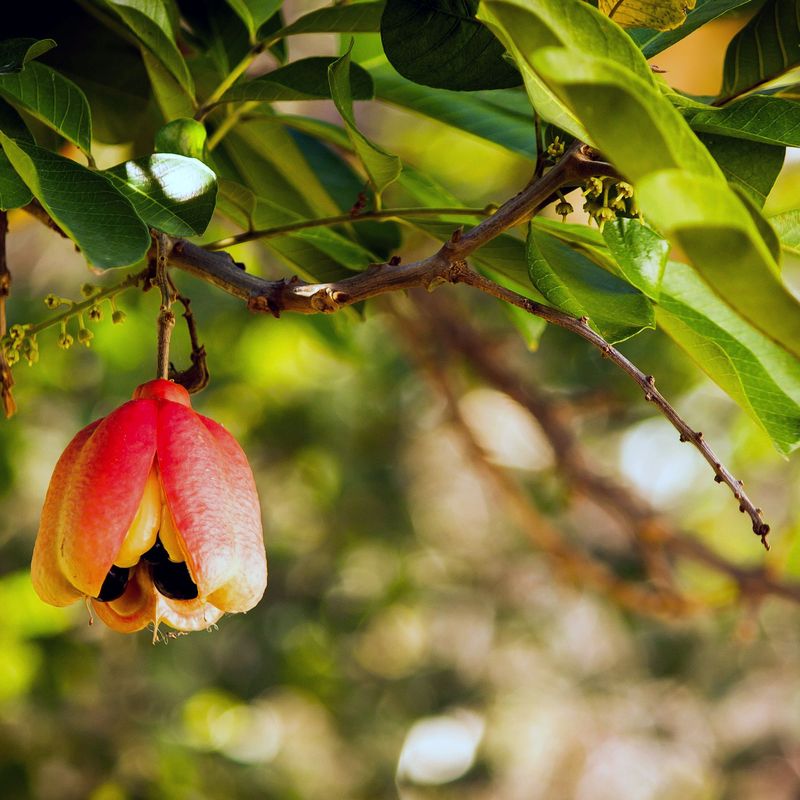
Jamaica’s national fruit comes with a deadly warning label! Unripe ackee contains hypoglycin, a toxin so potent it can cause fatal Jamaican Vomiting Sickness. Only when the fruit naturally opens, revealing yellow arils, is it safe to consume.
The FDA banned fresh ackee imports until 2000, and still heavily restricts them. Those brave enough to try properly prepared ackee describe a buttery, nutty flavor similar to scrambled eggs. Would you risk it for Jamaica’s beloved breakfast?
8. Durian (Durio zibethinus)
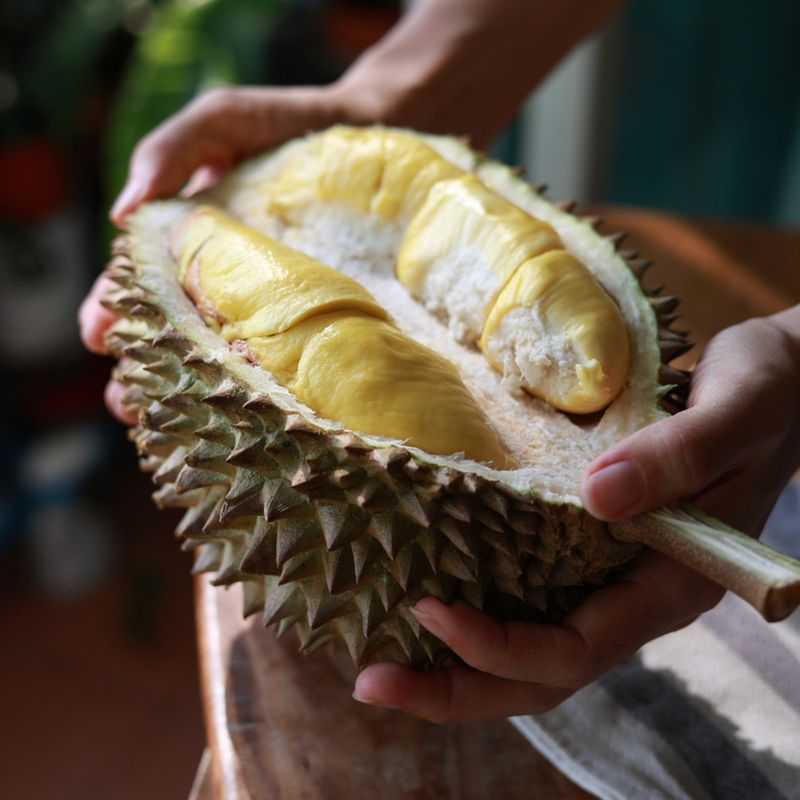
Banned from hotels, public transportation, and entire buildings throughout Southeast Asia – meet the world’s smelliest fruit! Durian’s odor has been compared to gym socks, rotting onions, and sewage, yet its custard-like flesh inspires cult-like devotion.
Though occasionally found in Asian markets, experiencing truly ripe durian requires a Southeast Asian journey. Most exported specimens are harvested unripe to minimize the stench. Are you brave enough to try the fruit that smells like hell but tastes like heaven?
9. Jackfruit (Artocarpus heterophyllus)
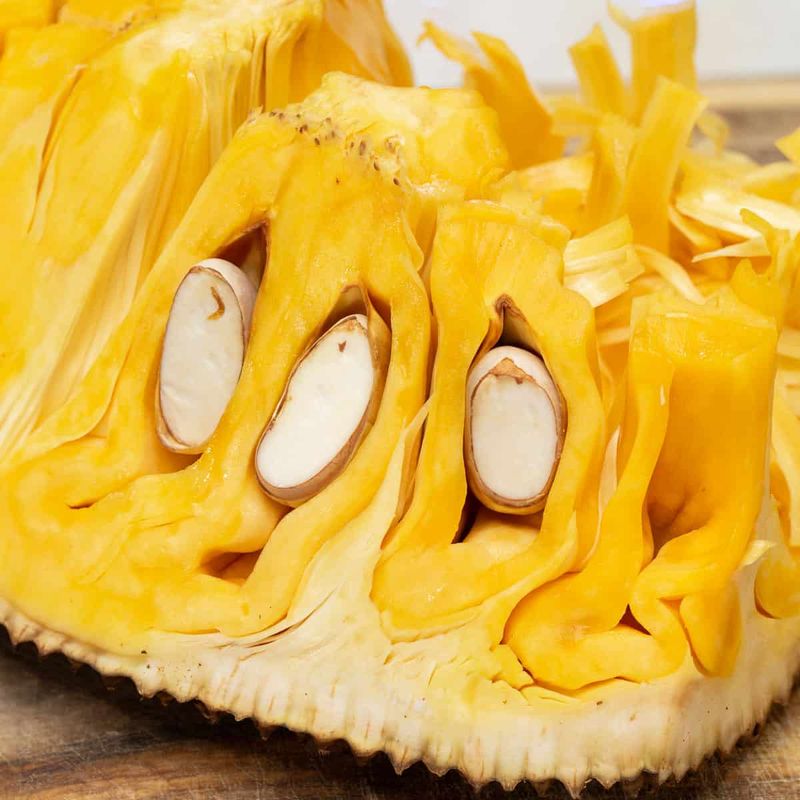
Holy cow! The largest tree fruit in the world can weigh up to 100 pounds! Though gaining popularity as a meat substitute, truly ripe jackfruit remains a rare delicacy outside Asia.
Ripe jackfruit pods taste like a tropical flavor explosion – imagine Juicy Fruit gum mixed with mango, banana, and pineapple. Finding perfectly ripe specimens in Western countries? Nearly impossible. Most arrive underripe or are processed for vegan pulled “pork.”
10. Achiote (Bixa orellana)
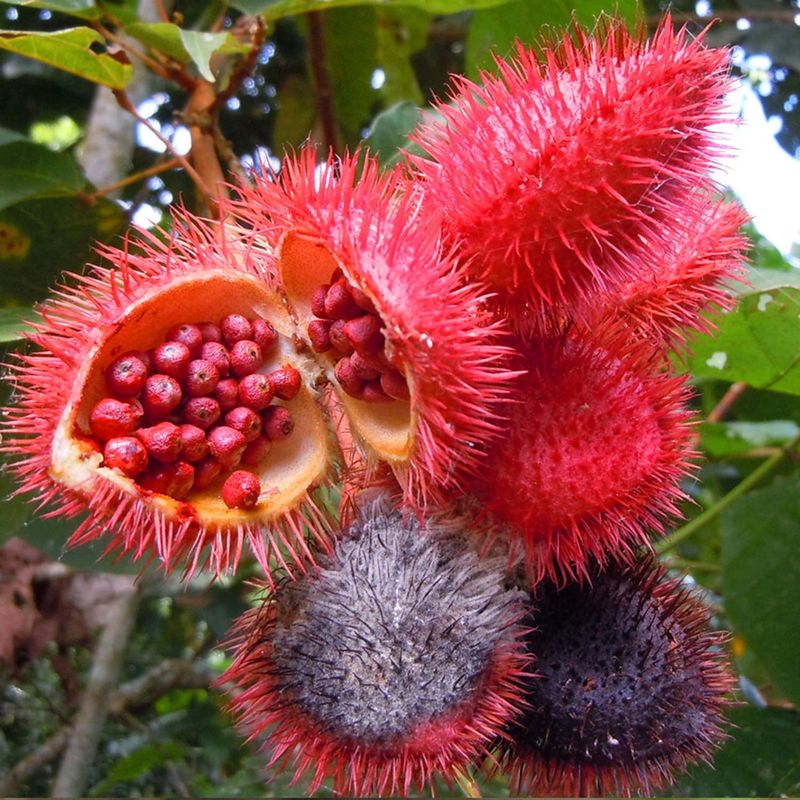
Hidden within spiky red pods, achiote seeds serve as both food and vibrant crimson dye. Native to tropical regions of the Americas, these seeds provide the distinctive color in dishes like cochinita pibil and Filipino pancit.
Though the seeds themselves have a subtle, earthy flavor with pepper hints, fresh achiote fruit remains virtually unknown outside its native regions. Stumbling upon the fresh, unopened seed pods? That would require a specialized tropical expedition!
11. Salak (Snake Fruit)

Don’t scream! Salak’s scaly, reddish-brown skin eerily resembles snake skin, hence its common name. Peeling away this reptilian exterior reveals crisp, apple-like segments with a unique sweet-sour taste and unmistakable pineapple aroma.
Native to Indonesia and Malaysia, fresh snake fruit deteriorates rapidly after harvesting. Though occasionally exported to specialty Asian markets, the specimens rarely match the extraordinary flavor of those freshly plucked from Indonesian trees. Share this bizarre fruit fact with your ophidiophobic friends!
12. Kiwano (Horned Melon)
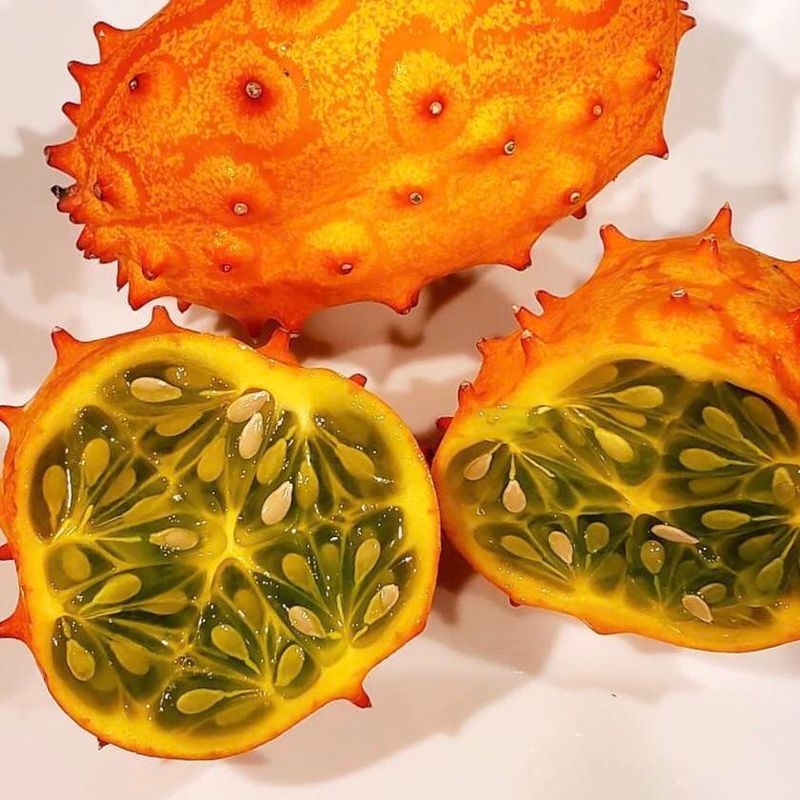
Straight from a sci-fi movie set! Kiwano’s spiky orange exterior houses lime-green jelly filled with edible seeds. Native to sub-Saharan Africa, this alien-looking fruit delivers a cucumber-banana-lime flavor combination that’s utterly unique.
Though occasionally spotted in specialty stores, truly ripe kiwano remains elusive. Most exported specimens are harvested prematurely, resulting in bland, watery flesh. The genuine African experience, with its intense tropical flavor? That’s something most of us will never know.
13. Canistel (Egg Fruit)

Would you eat a fruit that looks and feels like hard-boiled egg yolk? Canistel’s bright yellow flesh has the exact texture of cooked egg yolk but tastes like sweet potato mixed with vanilla custard.
Native to Mexico and Central America, this peculiar fruit bruises easily and deteriorates quickly after ripening. Few outside its native regions will ever experience its unique texture-flavor combination. Might be worth booking that tropical vacation after all!
14. Rollinia (Biriba)

Imagine if lemon meringue pie and cotton candy had a baby – that’s rollinia! This bizarre Amazonian fruit resembles a green pine cone covered in soft spikes, but inside hides the creamiest, sweetest white flesh imaginable.
Unfortunately, rollinia self-destructs within hours of ripening, turning from delicacy to mush almost instantly. Even in Brazil, finding perfect rollinia requires perfect timing and local knowledge. Most botanists consider it the holy grail of tropical fruit experiences!
15. Ice Cream Bean (Inga edulis)
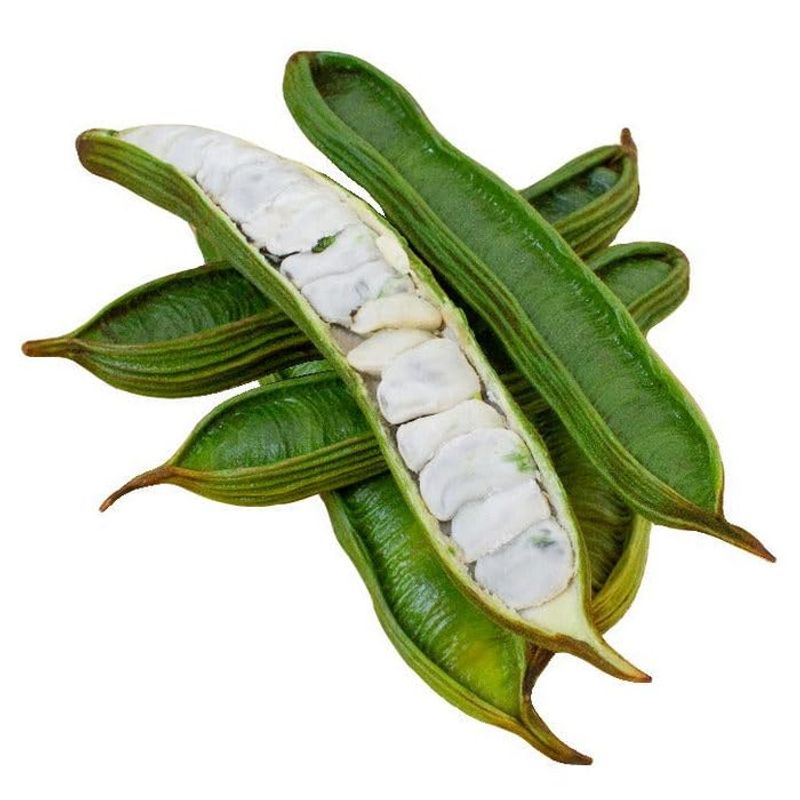
No, it’s not actual ice cream – but close enough! This Amazonian marvel produces foot-long pods containing cottony white pulp surrounding black seeds. The flavor? Vanilla ice cream with hints of cinnamon and fruit.
Though the trees grow throughout South America, the beans deteriorate within hours of picking. Even dedicated fruit hunters rarely experience perfect specimens. Next time you’re trekking through the Amazon, keep your eyes peeled for these remarkable treats!

